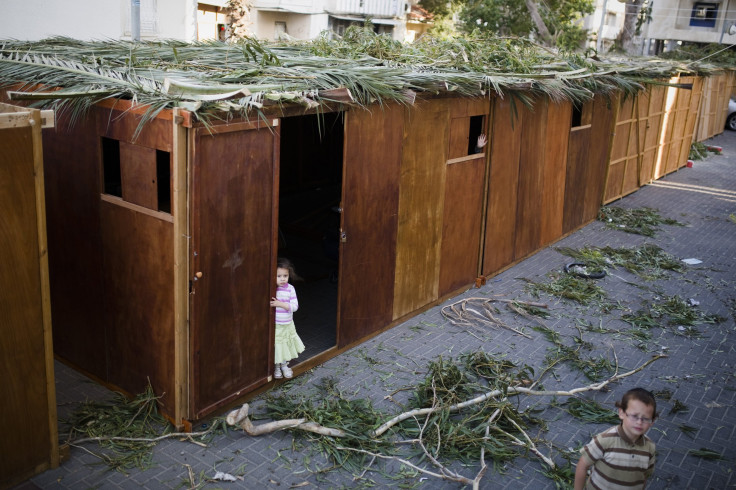What Is Sukkot? 5 Quick Facts You Should Know About The 2015 Jewish Harvest Holiday

If you take a quick look at your Hebrew calendar, you’ll notice that it’s the year 5776 and time for the Jewish festival of Sukkot -- known in English as the Feast of the Booths or the Feast of the Ingathering -- which begins Sunday. The agricultural festival will start at sundown and run for seven days until the 21st day of Tishrei, which is the first month of the year in the Hebrew calendar.
The holiday is held in memory of the Book of Exodus tale describing how the Israelites traveled for 40 years through the Sinai Desert in Egypt before entering the Holy Land. To celebrate the occasion, Jews built a structure known as a sukkah, a replica of the huts that Israelites lived in during their voyage. Below are five quick facts to help you understand the history and tradition of the festival.
#ShabbatShalom to all, have a wonderful weekend, I'm excite is about to be #sukkot, I hope everyone building a sukkah pic.twitter.com/KNllyR5UsY
— Yocheved M Rodriguez (@ymrn03) September 25, 20151. What does Sukkot mean? The word derives from sukkah, or “booths” in Hebrew, and is a celebration that commemorates the temporary shelters that Hebrews lived in for 40 years while they crossed the Sinai desert after leaving Egypt. In accordance with instructions inside Leviticus 23:42-43, Jews are instructed to “live in sukkah for seven days, so your descendants will remember that I [the Lord] had the Israelites live in wilderness shelters when I brought them out of Egypt.” The metaphorical meaning of the holiday represents human fragility and urges Jews to appreciate their homes and bodies, although most Jews do not sleep in the sukkahs overnight.
2. How is the sukkah built? The small wooden three-sided structure, which has branches as a roof, is usually built in yards, or on porches, courtyards, lawns, balconies and rooftops, and must be big enough to dwell inside it. The branches, known as sechach, need to be thin enough so that occupants can see the stars above, a reminder of the power of God as the creator. Most families opt to build their sukkahs from scratch, but some are prefabricated and easy to assemble. The insides are typically decorated with harvest vegetables such as corn and dried squash.
3. How is Sukkot celebrated? The festival is celebrated over a seven-day period and all meals are eaten inside the dwelling. During the festival, Jews are instructed to hold four plants: hadas (leaves from the myrtle tree), aravah (leaves from the willow tree), etrog (fruit of the citron tree) and lulav (palm frond). The practice is outlined in Leviticus 23:40: "On the first day you shall take the product of goodly trees, branches of palm trees, boughs of leafy trees, and willows of the brook, and you shall rejoice before the Lord your God for seven days."
4. What’s on the menu? Typically dishes contain foods from the autumn harvest. In the U.S., most Sukkot recipes include pears, apples, carrots, sweet potatoes and other root vegetables.
5. Say What? “Chag Sameach" (pronounced KHAHG sah-MEHY-ahkh). The saying literally means joyous festival. This is an appropriate greeting for just about any holiday, but it's especially appropriate for Sukkot, Shavu'ot and Pesach (Passover).
© Copyright IBTimes 2024. All rights reserved.






















